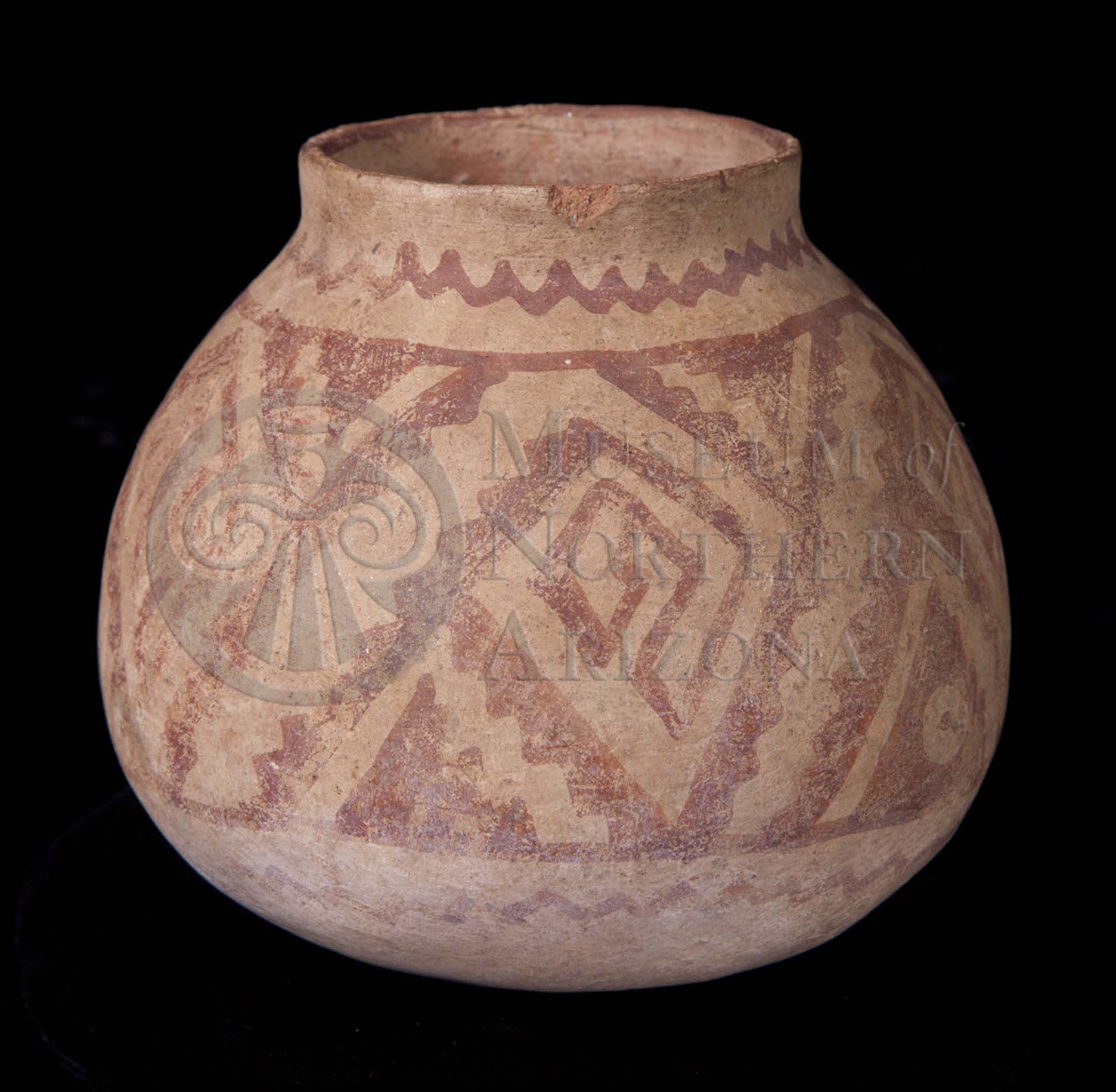
Sacaton Red-on-buff jar from the Museum of Northern Arizona collections. Click the image to open the Sacaton Red-on-buff gallery.
Sacaton Red-on-buff was made primarily in the middle Gila River valley, but found throughout the Hohokam region.
Archaeological Culture: Hohokam
Date Range: ca. A.D. 950-1150.
Construction: By paddle and anvil.
Firing: In an oxidizing atmosphere.
Temper: Course-grained mica schist and quartz; calcium carbonate inclusions.
.
Surface Finish: Muscovite mica is plainly visible on vessel surfaces; smoothed and wiped; slipped or unslipped (the appearance of slip may be the result of salt added to the clay; Weisman 1987 in Abbott 2008).
Paste Color: Surface color generally white, yellow-white, or tan; less often light brown, gray-brown, gray, or orange.
Forms: Bowls, jars, many with sharp Gila shoulders; scoops, ladles, plates, censers, effigies; cauldrons and sharp Gila-shoulders are diagnostic; semi-flare-rimmed hemispherical bowls occur only in the Late Sacaton.
Decoration:
- Paint: Bright red, dull red, or purplish red.
- Pigments: Iron oxide mineral paint.
- Design: Bold line work, plaited layouts, large solids; double-capped fringe in sectioned layouts; line-demarcated panels; crenulated lines as centerline motifs; large repeated life form or geometric elements; rectilinear scrolls; painted rim; brush work is poor. Early Sacaton Red-on-buff has organizational banding and full rim lines, large solids, and trailing lines spaced more than 3 cm apart. Middle Sacaton Red-on-buff has banded layouts, crenulated lines as centerline motifs, design element diversity, line-demarcated panels, voids with small elements, and zipper motifs. Late Sacaton Red-on-buff has wavy-edged solids, outline line and stagger, and design field separation from bowl rims.
- Incising: None.
Key Traits: Vessel form (cauldrons, vessels with sharp Gila shoulders, and semi-flare-rimmed hemispherical bowls); rim lines; outline line and stagger; design field separation from rim (bowls); line-demarcated panels.
Comparisons: Santa Cruz Red-on-buff vessel walls are thinner and lines are generally more finely executed.
Compiled from the following sources:
Abbott, David R. (2008) The Process, Location, and History of Hohokam Buff Ware Production: Some Experimental and Analytical Results. Journal of Archaeological Science 35(2):388-397.
Abbott, David R. (2009) Extensive and Long-Term Specialization: Hohokam Ceramic Production in the Phoenix Basin, Arizona.American Antiquity 74(3):531-557.
Wallace, Henry D. (2004) Update to the Middle Gila Buff Ware Ceramic Sequence. In Hohokam Farming on the Salt River Flood-plain: Refining Models and Analytical Methods, edited by T. Kathleen Henderson, pp. 45-124. Anthropological Papers No. 43. Center for Desert Archaeology, Tucson.
Compiled by:
Meghann M. Vance, Northern Arizona University Anthropology Laboratories
